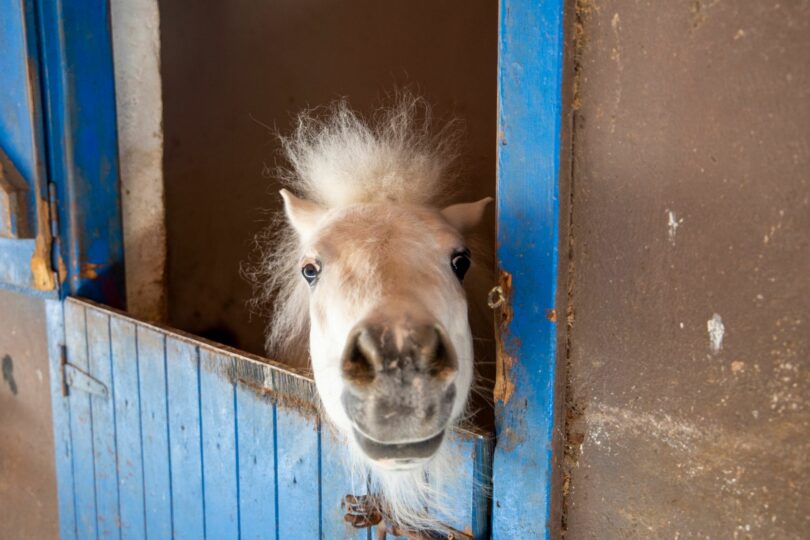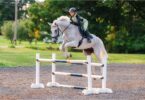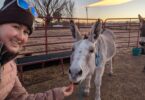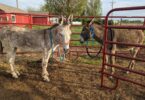9 Horse House Names and What They Mean
If you’ve ever wondered what a horse house is called, spoiler alert: it isn’t “horse house!” Equestrians (i.e. horse people) have many names for every aspect of their sport, and where you keep a horse is no exception.
Though “barn” is the most common word for where horses hang out, terms get a lot more granular depending on the exact living situations.
This article summarizes the terminology you might hear when riders talk.
What is a horse barn?
“I’m going to the barn!” This is one of the most frequent phrases to leave equestrians’ mouths. (Along with “Whoa!”) Many horses live in barns at least some of the time.
Some barns include separate smaller areas where individual horses live, and other structures are large open spaces where horses can congregate to escape the elements (e.g. rain, wind) as needed.
Barns are traditionally not climate controlled, meaning they usually lack air conditioning and central heating. For that reason, you’ll often see box fans to circulate air in the summer and blanketed horses in the winter.
What is a horse stable?
The words “barn” and “stable” are interchangeable. That said, you’ll often hear the latter in English style facilities. Some would even argue that “stable” has a higher-end connotation.
What is a horse stall?
A stall is a square (usually) box where a single horse lives. It often has see-through walls to the stalls on either side, or a half door in the front.
Horses are social animals, and it’s better for their overall mental health if they can see each other—especially if living alone.
Some horses love living in stalls, and others hate it. Those who dislike being confined can develop vices like cribbing (chewing on wood while sucking in air), weaving (moving the head and neck side to side), or pacing (walking back and forth restlessly).
Stalls should always be checked for sharp edges and other potential hazards. You’d be amazing what horses can find to get themselves in trouble!
What is a horse stall and run?
A stall and run living arrangement pairs a traditional stall with outdoor access to a small dirt area. This allows horses to move in and out of the barn freely, but without the risk of larger turnout or living in a herd setting.
This option can also be good for horses recovering from injuries, as they’re allowed to move a bit—but not excessively.
What is a horse paddock?
A paddock is larger than a stall and run, but smaller than a pasture or field. Typically, a small group of 3-5 horses live together in a paddock 24/7. Smaller paddocks may only house one horse.
Shelter is important, as outdoor horses need some way to escape the elements.
Often, horses are housed in paddocks for part of the day, then turned out into a larger grassy area for the other part (if the paddock is dirt).
What is a horse dry lot?
A dry lot is essentially a paddock made of dirt—not grass. As such, horses living in a dry lot will need to be on regular feed schedule (e.g. loose hay, round bale).
Dry lots are also good for horses that are overweight and do not need to eat grass all day.
What is a horse run-in shed?
Paddocks and other open spaces should always have shelter, whether it’s in the form of dense tree cover or (more commonly) a run-in shed.
Sheds are normally three-sided so horses can enter from an open front side. Sheds should be positioned to block the primary wind direction in your area and securely anchored to the ground.
Typically, 2-3 horses fit comfortably in a shed—though more may crowd in during bad weather.
What is a horse pasture?
The word “pasture” is used to describe larger fenced open spaces where horses can graze freely on grass. This is also called “turnout.”
Larger groups of horses can share larger pastures, though herd dynamics must be carefully considered. Not all horses get along.
What is a horse field?
This term is interchangeable with “pasture.” It’s a wide open space (fenced) where horses can move around freely and graze.
What about wild mustangs?
Not all horses live in manmade facilities—or fenced open spaces. Wild mustangs still roam freely in parts of the United States.
They must find their own shelter from the elements, food, and water, without human intervention.
Do horses like being stalled?
While horses can learn to be stalled, it’s not their natural environment. Horses are herd animals, designed to be social and on the move all day long. Being kept in a stall puts a serious damper on both of these activities, which can lead to increased stress and digestive issues.
Stalls do have their purposes, like a place to recoup if your horse needs stall rest due to an injury. It’s important to make sure your horse understands and behaves in a stall, but it’s much better for their health to have as much time outdoors (and with other horses) as possible.
Is it better to keep a horse in a stall or pasture?
Pasture, hands down. Horses are social herd animals designed to roam and graze for up to twenty hours a day. Being in a pasture most closely mimics their natural environment and helps keep them at their healthiest. The constant movement and foraging helps reduce stress and leads to better respiratory and digestive health.
If pasture board isn’t an option, find a stall board option that includes maximum turnout—12 hours a day is ideal. A stall with an attached run is a nice choice for extra room to move.
What’s in a name?
If you’re new to the horse world, it takes time to “speak equestrian” fluently. Never be afraid to ask questions if you hear terms you don’t know, and be kind to yourself when you say the wrong thing. We’ve all been there!
P.S. Enjoy this article? Trot on over to:
- Equine Shelter 101: Do all horses need a stable?
- Horse Hay FAQs: List of Types of Hay, What Hay is Best, etc.
- Rookie FAQ: What is it called when you ride a horse?
- Food or Foe: What Do Horses Eat (And Why)
- Fact of Fiction: Do Horses Eat Meat?
- How Horses Sleep: A-Zzz Guide to Equine Rest
- Manure Management Made Simple for Horse Rookies







